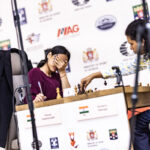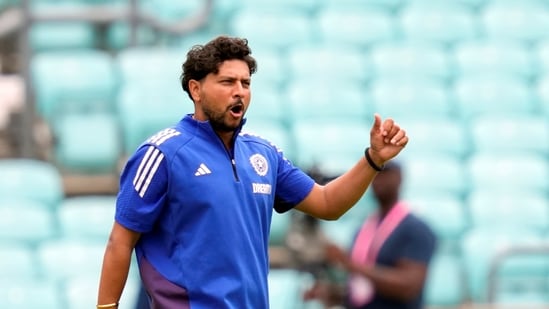India’s Strategic Failures in England: A Comprehensive Analysis of the Manchester Test Collapse
England vs India 2025: Tactical Breakdown and Selection Missteps at Old Trafford
India’s Strategic Failures in England: The fourth Test match at Old Trafford witnessed a systematic breakdown of India’s bowling strategy, selection policy, and tactical approach that exposed fundamental flaws in their overseas Test cricket philosophy. We examine the multifaceted reasons behind India’s capitulation, analysing the deeper structural issues that have emerged during this crucial series.
India’s Bowling Strategy Collapse: A Decade-Long Record Shattered
For the first time in over ten years, India conceded 500 runs outside Asia and the West Indies, marking a significant departure from their previously disciplined bowling approach. This statistical anomaly represents more than just numbers on a scoreboard; it reflects a fundamental shift in India’s ability to control overseas Test matches.
Between 2005 and 2015, India regularly leaked 500-plus totals on foreign soil, with sixteen such instances recorded during particularly torrid tours of England and Australia. The subsequent decade saw a remarkable transformation, with India’s pace battery developing the discipline and skill to prevent such massive totals. We witnessed this evolution through the emergence of a world-class fast bowling unit comprising Jasprit Bumrah, Mohammed Shami, Ishant Sharma, and Mohammed Siraj.
The Pace Bowling Conundrum: Anshul Kamboj’s Disappointing Debut
Anshul Kamboj’s Test debut at Old Trafford will be remembered as one of India’s most puzzling selection decisions in recent memory. Despite impressive domestic credentials and endorsements from MS Dhoni and R Ashwin at Chennai Super Kings, Kamboj’s performance raised serious questions about India’s talent evaluation process.
The pace differential between Kamboj’s IPL performances and his Test debut revealed concerning gaps in preparation and execution. While maintaining an average speed of over 135 kmph in 55% of his IPL deliveries, Kamboj’s Test average dropped to a pedestrian 125.34 kmph on day three, with his fastest delivery clocking merely 134.58 kmph.
Bowling coach Morne Morkel’s admission of being unable to explain this dramatic pace reduction highlighted the management’s failure to identify and address obvious performance issues. We must question whether adequate preparation time and match-specific conditioning were provided to a debutant thrust into such a pressure situation.
Selection Policy Deficiencies: The Kuldeep Yadav Oversight
India’s decision to exclude Kuldeep Yadav from the playing XI represents a significant tactical oversight that potentially cost them control of the match. The left-arm wrist spinner’s absence became particularly glaring when England’s middle-order batsmen, especially Joe Root and Ollie Pope, settled into comfortable partnerships.
We observe that successful overseas tours require specialist bowlers who can provide different dimensions of attack. India’s reluctance to field their premier spinner against England’s technically accomplished batsmen demonstrated a conservative approach that ultimately backfired.
The Shardul Thakur Paradox: Selected But Underutilized
The inclusion of Shardul Thakur in the playing XI, followed by his minimal utilization, exemplifies India’s indecisive approach to team composition. We witness a pattern of hedge-betting that dilutes the effectiveness of specialist roles within the team structure.
Thakur’s addition was clearly motivated by overhead conditions favoring seam bowling, yet the team management’s reluctance to employ him meaningfully suggests a lack of clarity in tactical planning. This approach contrasts sharply with successful overseas campaigns where role clarity and specialist utilization have been paramount.
Jasprit Bumrah’s Declining Intensity: A Warning Sign
We observe a concerning trend in Jasprit Bumrah’s performance metrics throughout the series, indicating potential workload management issues. The statistical decline in his pace distribution reveals the physical toll of carrying India’s bowling attack:
- First Test, First Innings: 42.7% deliveries over 140 kmph
- First Test, Second Innings: 22.3% deliveries over 140 kmph
- Old Trafford Test: 0.5% deliveries over 140 kmph
This dramatic reduction in high-pace deliveries suggests that Bumrah’s three-Test limitation may be a more pressing concern than initially anticipated. We must acknowledge that India’s over-reliance on their premier fast bowler has created an unsustainable burden that affects both his performance and the team’s overall bowling strategy.
Tactical Approach Analysis: Abandoning Proven Methods
India’s departure from their traditionally successful overseas formula represents a critical strategic error. We have consistently observed that India’s most successful overseas campaigns relied on sustained pressure through disciplined line and length bowling, supported by relentless intensity from their pace quartet.
The Old Trafford collapse occurred precisely when India abandoned these proven methods in favor of experimental approaches. We note that successful Test cricket requires unwavering commitment to established strengths rather than reactive tactical adjustments that lack foundation.
Root and Pope Partnership: Exploiting India’s Tactical Confusion
Joe Root and Ollie Pope’s partnership exposed India’s tactical confusion and inability to adapt to changing match situations. We observe that elite batsmen like Root capitalize on bowling attacks that lack clear plans and sustained pressure.
The ease with which England’s middle order accumulated runs reflected India’s failure to maintain the disciplined approach that had served them well over the previous decade. We witness a concerning trend where India’s bowlers search for wickets through individual brilliance rather than collective pressure.
Depth and Experience: The Missing Components
India’s current transition phase lacks the depth and experience necessary for sustained overseas success. We must acknowledge that the team’s previous overseas achievements were built on having multiple reliable options in each department.
The contrast between India’s current bowling resources and their 2018-2021 overseas campaigns highlights the importance of having experienced alternatives when frontline bowlers face form or fitness issues. We observe that successful touring teams require at least two reliable options in each specialist role.
Fast Bowling Battery: Quality vs Quantity Debate
India’s current fast bowling approach prioritizes quantity over proven quality, as evidenced by the Kamboj selection over more experienced alternatives like Prasidh Krishna. We must question whether this approach provides the reliability necessary for consistently competitive overseas performances.
The decision to leapfrog established performers in favor of untested options represents a departure from India’s traditionally conservative overseas selection policy. We note that such experimental approaches often prove costly in the pressurized environment of overseas Test cricket.
Strategic Recommendations for Future Overseas Campaigns
We propose several strategic adjustments that could address India’s current overseas challenges:
Specialist Role Clarity
India must establish clear role definitions for each bowler, ensuring that selections align with specific match situations and conditions. We recommend avoiding multi-dimensional selections that compromise specialist effectiveness.
Workload Management Protocols
The establishment of comprehensive workload management protocols for key bowlers like Bumrah should prevent the intensity decline observed at Old Trafford. We suggest rotating premium bowlers strategically rather than risking burnout through overuse.
Spin Bowling Integration
Regular inclusion of specialist spinners like Kuldeep Yadav in overseas tours provides tactical flexibility and reduces over-reliance on pace bowling. We observe that successful overseas teams maintain balanced attack options regardless of surface conditions.
Conclusion: Addressing Systematic Issues
The Manchester Test collapse represents more than an isolated poor performance; it reflects systematic issues in India’s overseas Test cricket approach. We have identified critical areas requiring immediate attention: selection consistency, tactical clarity, workload management, and specialist role optimization.
India’s successful overseas campaigns have historically been built on disciplined bowling, clear tactical plans, and unwavering commitment to proven methods. The current transition phase demands a return to these fundamental principles while incorporating necessary adaptations for modern Test cricket conditions.
We must acknowledge that successful overseas Test cricket requires patient rebuilding rather than experimental approaches that compromise established strengths. India’s path back to overseas competitiveness lies in addressing these systematic issues through comprehensive strategic planning and execution.
The lessons from Old Trafford provide valuable insights for India’s future overseas campaigns, highlighting the importance of maintaining core strengths while adapting to evolving challenges in international Test cricket.













